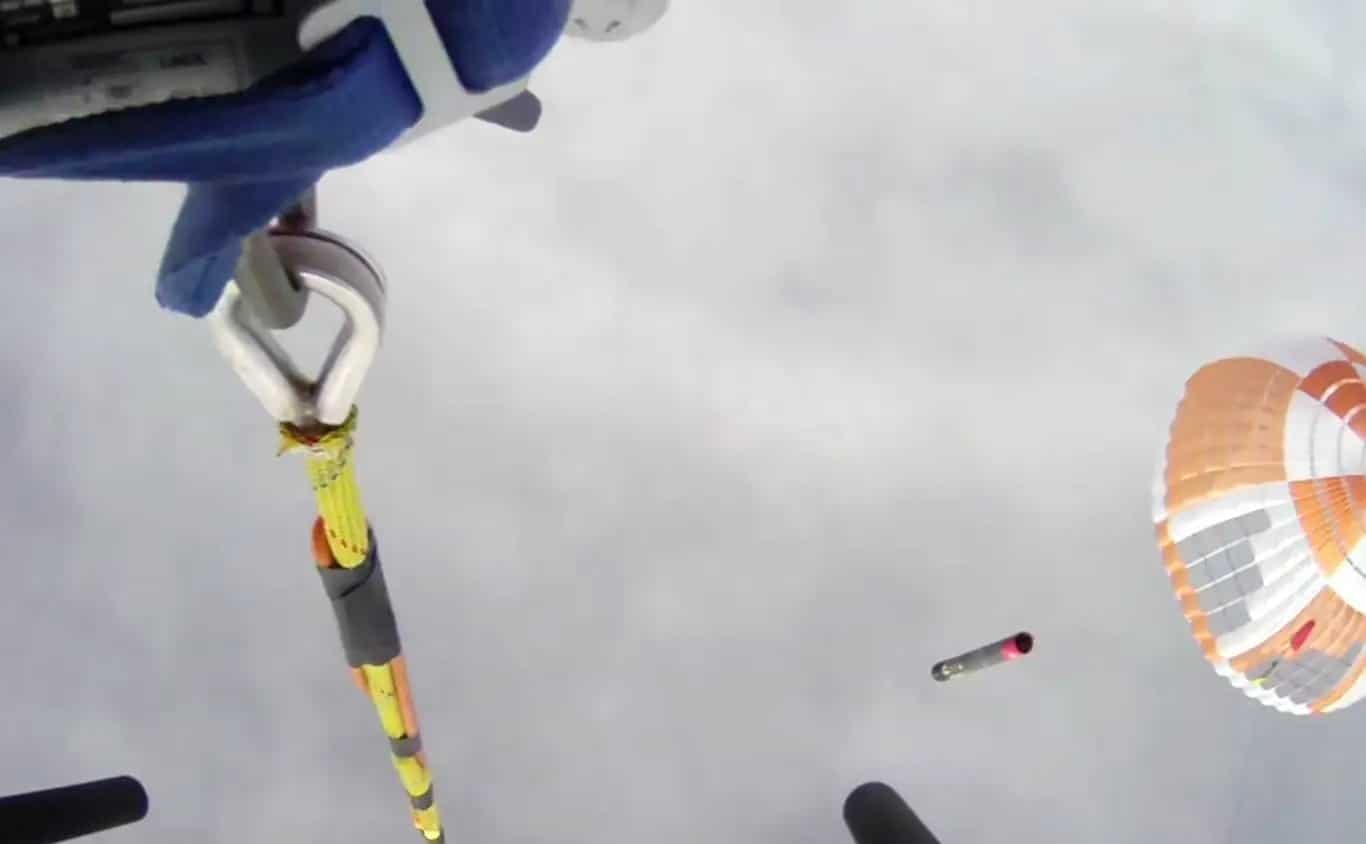Space company Rocket Lab failed May 3 in its first bid to catch and recover a launched rocket by a helicopter in midair off New Zealand, but said the attempt provided valuable data that will feed its effort to make the rocket model reusable.
Long Beach, California-headquartered Rocket Lab’s two-stage Electron booster lifted off at 10:49 am local time May 3 from Pad A at the company’s Launch Complex 1 on Mahia Peninsula, on the east central coast of New Zealand’s North Island. Dubbed “There And Back Again,” the commercial rideshare mission successfully put 34 small payloads in low Earth orbit for Alba Orbital, Astrix Astronautics, Aurora Propulsion Technologies, E-Space, Spaceflight, and Unseenlabs. It was the 26th Electron launch for Rocket Lab, which was founded in 2006 by New Zealand entrepreneur Peter Beck.
A secondary objective of the mission was to test the ability to capture the Electron’s 56,000-pound-thrust first stage in midair after it had separated from the upper rocket and payloads. The test is part of Rocket Lab’s three-year-old effort to make the Electron a reusable small launch vehicle, which would lower launch costs for customers. The company has previously recovered Electron first stages from the ocean on three missions; submersion in sea water requires much rework before a stage can be reused.
To date, SpaceX’s Falcon 9 in the only reliable reusable booster.
Rocket Lab acquired a former Bristow Group twin-engine, medium-lift Sikorsky S-92A for the recovery mission and conducted tests with dummy targets. The S-92A, tail number ZK-HEV, was registered in March to Advanced Flight, a helicopter charter and management company based in the Auckland suburb of Onehunga. It is the only S-92 listed on New Zealand’s aircraft registry.
On May 3, the first stage separated from the rocket about 2 minutes 30 seconds after launch and descended toward the South Pacific on a parachute. The S-92 crew intercepted the roughly 2,870-pound spent first stage about 150 nautical miles (about 280 kilometers) offshore at 6,500 feet (about 1,980 meters) and then captured the parachute with a longline hook. (The S-92 is certified to carry a 8,000-pound external load.)
But the captured stage exhibited flying characteristics different from what they had experienced in tests. About 30 seconds after capture, the pilots released the stage to descend to the ocean. In a live Rocket Lab webcast of the operation, a crowd in the launch control facility could be heard cheering at the capture, then shortly thereafter collectively groaning.
A recovery ship positioned below the descent path of the booster retrieved it from the water.
The capture itself was a key milestone, company officials said, stressing before the launch that the recovery test would produce valuable data regardless of its outcome.
“Bringing a rocket back from space and catching it with a helicopter is something of a supersonic ballet,” said Beck, who is the company’s CEO. “A tremendous number of factors have to align and many systems have to work together flawlessly.” He said Rocket Lab will “assess the stage and determine what changes we might want to make to the system and procedures for the next helicopter catch and eventual re-flight.”
The attempt revives a proven technique for recovering important assets in midair by helicopter.
In the 1960s, the U.S. Air Force used Sikorsky CH-3 Sea King helicopters to retrieve target and reconnaissance drones. It also has used fixed-wing aircraft to retrieve payloads from secret reconnaissance satellites. The U.S. Army used Sikorsky CH-37 Mojaves to retrieve ballistic missile warheads and rocket nose cones after suborbital test flights.
The United Launch Alliance has proposed a midair retrieval system for the first-stage Blue Origin BE-4 engines on its new Vulcan heavy-lift rocket. Several years ago, the U.K. helicopter operator PDG Aviation Services partnered with Airborne Systems and Lockheed Martin on a mid-air retrieval demonstration test program at West Freugh, Scotland on behalf of the U.K. Space Agency. In the past, NASA has contracted with Erickson to support its 3rd Generation Mid-Air Retrieval Project for recovering descending spacecraft components.
